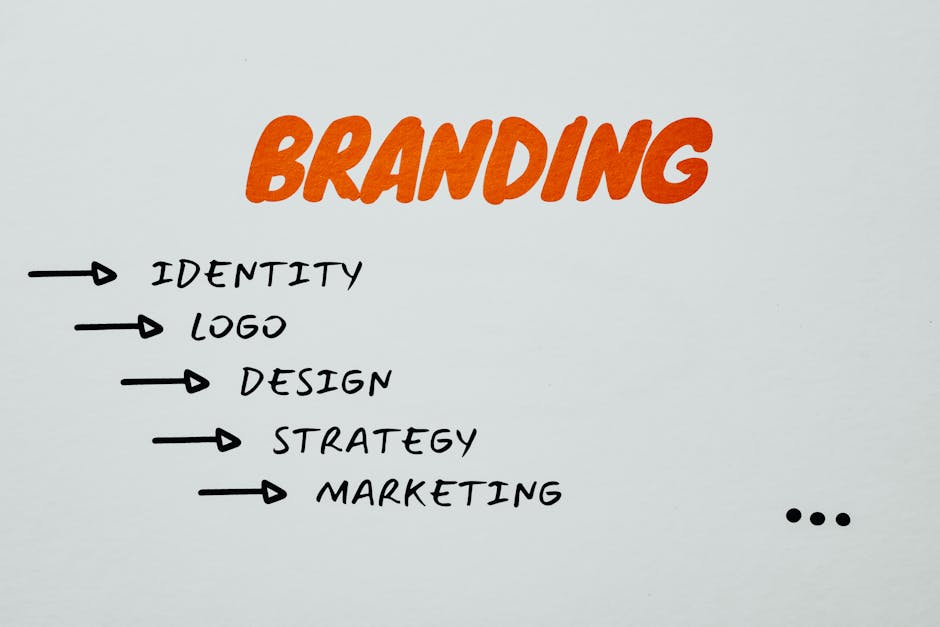How to Create Your Brand Strategy
Branding is the process of creating a perception in the minds of your target audience about your business. How you market your business and what you say about your business in marketing materials and campaigns determine this perception.
The brand identity includes the name, mission statement, values, personality, visual elements, and voice or tone of your business. How well these are developed is how well your brand will be developed.
Having a strong brand identity helps customers recognize your company and what you stand for. A strong brand identity helps customers trust your products and services, which in turn leads to more customers and revenue for your business.
Developing a brand strategy involves figuring out what kinds of branding will work best for your business in terms of profitability and customer engagement. This involves analyzing the competition, surveying current and potential customers, and thinking deeply about the kind of impression you want to make on people.
This article will discuss how to create a Brand Strategy for your company or organization.
Identify your market

Before you can create a brand, you need to identify who your brand is for. Who wants your product or service?
What problem does your product or service solve? How does your business make money? These are key questions that need to be answered in order to identify your market.
Markets come in several forms: internal users, external users, prospective buyers, and strategic partners. Internal users include employees of the company using the brand.
As a brand, you want to invest in creating quality products and services for internal users so that they enjoy working for the company and are highly productive. External users are people outside of the company who benefit from the products and services offered.
Prospective buyers are people who may buy your products or services, but do not work for the company. Strategic partners are outside companies that benefit from collaborating with your company.
Identifying all of these groups is important when crafting a brand strategy.
Develop your unique value proposition (UVP)

Once you have developed your brand strategy, launched your website is the next step. A website serves as the home for all of your brand assets.
You will use your website to share about who you are, what you do, and how people can find you. A website is also a place to share your stories, sell your services or products, and show off your work.
Having a web presence is crucial in today’s world as more and more people are searching for professionals online before making an appointment or purchase.
Having a website built specifically for you and your brand will help you gain visibility and establish trust with potential clients. A professional looking website creates confidence in potential clients and encourages them to contact you or purchase your services or products.
There are many ways to have a free website created but it may come with some disadvantages such as limited space for content, no ability to post videos or images, or limited customization.
Create your brand strategy

Photo by ThisIsEngineering on Pexels
So, now you should have a good idea of what a brand is, how to create your brand, and how to strategically place your brand into the world. Now it’s time to put it all together!
Once you have developed your brand personality, chosen your brand name, created a logo and set of colors, and developed your list of marketplaces to promote your brand in, you are nearly ready.
The last part of creating your brand strategy is to organize it all in a way that makes sense. Put it all down on paper (or computer) so that others can understand what your brand is and what it stands for.
This is also the time to think about how you want to grow your brand.
Design your brand identity

Once you have decided on your brand message, it’s time to think about how you want people to perceive you.
What brand attributes do you want people to think of when they hear your brand name? What kind of emotions do you want people to associate with your brand?
These questions are important when thinking about brand identity because they guide how you shape your brand.
For example, if you are trying to build a luxurious brand, then expensive high-quality materials and beautiful design should be incorporated into your product. This will help convey the attribute of luxury.
A fun, energetic brand should have fun, exciting branding and marketing elements. Keeping this in mind while designing and producing products will help reinforce the perception of this attribute.
Keep in mind that attributes like luxury or sustainability can be hard to incorporate into products, but may be important for your target market’s perception of your brand.
Launch your website

Photo by Ketut Subiyanto on Pexels
Once you have developed your brand strategy, you can launch your brand. The best way to do this is by launching a website.
Having a website is crucial in the digital age. It serves as your virtual presence where people can learn about you, your services, and how to contact you. It also functions as a platform to build your reputation and trust with potential clients.
Having a website puts you ahead of the game compared to those who do not have one. Clients tend to look at someone who is professional and has a polished website as someone who takes their work seriously.
Establish social accounts

Photo by Tracy Le Blanc on Pexels
Now, it is time to open up accounts for your brand on social media. Which accounts you open depends on which platforms your target audience uses most frequently.
If your target audience is mostly on Instagram, then an account for your brand should be established there. If your target audience is mostly on Twitter, then a Twitter account should be set up.
Once again, it is best to create these accounts anonymously until you have engaged a sufficient number of followers. It will save you some embarrassment if you do not have thousands of followers already if people find out it’s you.
You can connect your accounts to your website or other social media accounts, so that when people click on the links they go directly to your site. This will also help with branding yourself as a company or person.
Embrace multimedia

As mentioned before, the world has shifted away from traditional media and into digital and social media.
People access information faster and more often via smartphones than they do from newspapers. And most people don’t watch TV for the programs, but to watch ads and try out new products.
More and more brands are using multimedia strategies to spread their brand messages and product offerings. This is particularly true of fast-food chains like McDonald’s, which now offers its menu items on digital platforms like Uber Eats and GrubHub.
You should consider how you can use these platforms to spread your brand message and product offerings as well. For example, you could create an ad for your brand on YouTube or invest in Google advertising to reach more people. You could also offer coupons on Facebook or send out promotional emails via your company email address.
Implement marketing strategies

Photo by Eva Bronzini on Pexels
Once you have a good idea of what kind of brand you want to be, it’s time to start putting those ideas into action. Start with small marketing strategies and grow from there!
Start with creating a social media presence on the platforms your target audience is on. Create an Instagram account or profile if you are not already one, and start posting quality content that relates to your brand.
Create a website that reflects your brand and offers quality information to your potential customers. If you do not know how to create a website, then search for free website builders like WordPress or Hubspot and create one there.
Then, put up some fliers or posters around your community with information about your brand. Try putting out ads at busy places related to your niche as well! Getting people aware of your brand is a big part of marketing.

